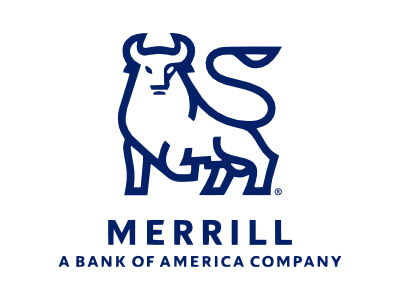Have you saved enough for future health care costs?

Over their longer lives, women spend far more on health care than men. These tips from Bank of America can help you cover the costs at every age.
When it comes to health and financial wellness, there is one thing women could plan to do: “Save more for future medical costs,” says Nevenka Vrdoljak, a director for the Chief Investment Office, Merrill and Bank of America Private Bank.
Consider this number: $194,000.2 “That is how much more, on average, women end up spending on health care in retirement, largely because they tend to live longer than men and are more likely to have multiple chronic conditions and require long-term care,” Vrdoljak points out. In fact, women are faced with significantly higher annual health care costs throughout their lives,3 she adds. “That is why it is so important for women to carefully plan to cover their present and future medical expenses.”
Working together with your financial advisor, you can estimate your future health care costs and develop a strategy for covering them as you grow older. Below are some tips and strategies to consider at various stages of your life.
When you are a young adult
-
Make wellness a habit. Be sure to take advantage of the health and wellness programs your employer offers. When you are considering job offers, pay special attention to the benefits like maternity and paid family leave,” says Vrdoljak. Being proactive about your health early on can help avoid complicated, costly medical issues later on. Thankfully, the rise of telemedicine means that seeking preventive care, both mental and physical, takes less time out of your busy schedule. At the same time, apps, mobile devices and smart watches can help prompt you to stay fit.
-
Consider funding a health savings account (HSA). If you sign-up for a high-deductible insurance plan, you are eligible to save a certain amount each year for your health care costs in a tax-free HSA. Funds that are not used right away grow tax-free and can be used for medical expenses anytime in the future.
-
Keep saving — even during years away from work. Many women take time off to take care of children, which can have an impact on their retirement savings and Social Security payments down the line. “If your spouse is working, having them contribute to a spousal IRA could help you continue to build up retirement savings during periods spent at home,” says Vrdoljak. “It is also important to consider whether you have sufficient life and disability income insurance,” she adds.
As you move into midlife
-
Explore caregiving resources. If you are taking primary responsibility or helping care for an elderly loved one, be aware of the impact that could have on your own well-being. Half of caregivers surveyed by the Centers for Disease Control and Prevention reported a decline in both physical and mental health.5 Familiarize yourself with any counseling and stress reduction benefits your employer or insurance coverage offers.
-
Consider your long-term care needs. Long-term care insurance premiums generally begin to rise as you grow older, but there are other options to consider as well. Talk with your advisor about a range of ways you might prepare for long-term care costs.
-
Take advantage of catch-up savings. The more you have saved for retirement, the better prepared you will be for future health care costs. So now is a good time to get serious about maxing out your contributions. Starting at age 50, you can contribute an additional catch-up amount to many accounts.
When you’re close to — and in — retirement
-
Keep your fitness routine going. Research has shown that engaging in physical exercise as you age can help keep your body and your mind in optimal shape, reducing health problems — and expenses — both in the present and down the road.6
-
Review your asset allocations. Set up time to talk with your advisor about your retirement readiness, including your ability to manage future health care costs. Will you have enough cash on hand for medical emergencies? Do you have income-producing investments earmarked for health care costs?
-
Think beyond Medicare. Although Medicare helps handle many costs, it does not cover everything. You are still responsible for premiums and copays, and long-term care, vision and dental care generally are not included under traditional Medicare. Beyond answering your questions about Medicare, your advisor can help you compare available Medigap and Medicare Advantage health insurance plans.
For more information, contact Merrill Lynch Financial Advisor Don P. Martone of the Hughes Landing office at (281) 882-4818.
1Harvard Health Publishing, “Mars sv. Venus: The Gender Gap in Health,” August, 2019.
2Age Wave and Merrill, “Women & Financial Wellness: Beyond the Bottom Line,” 2018
3Infographic: “Barriers to Care Experienced by Women in the United States” Kaiser Family Foundation, June, 2019
4 HealthView Services, “Addressing the Women’s Longevity Gap,” September 2020
5 Centers for Disease Control and Prevention, “Caregiving for Family and Friends — A Public Health Issue,” July 2019
6Nature Scientific Reports, “Physical Activity as a Determinant of Successful Aging Over Ten Years,” July 2018
Long-term care insurance coverage contains benefits, exclusions, limitations, eligibility requirements and specific terms and conditions under which the insurance coverage may be continued in force or discontinued. Not all insurance policies and types of coverage may be available in your state.
This material should be regarded as educational information on health care and is not intended to provide specific advice. If you have questions regarding your particular situation, you should contact your legal and/or tax advisors.
The case studies presented are for illustrative purposes only and intended to demonstrate the capabilities of Merrill and/or Bank of America. They are not intended to serve as investment advice since the availability and effectiveness of any strategy is dependent upon your individual facts and circumstances. Solutions presented are not appropriate for everyone. Results will vary, and no suggestion is made about how any specific solution or strategy performed in reality.
Merrill Lynch, Pierce, Fenner & Smith Incorporated (also referred to as “MLPF&S” or “Merrill”) makes available certain investment products sponsored, managed, distributed or provided by companies that are affiliates of Bank of America Corporation (“BofA Corp.”). MLPF&S is a registered broker-dealer, registered investment adviser, and Member SIPC. Merrill Lynch Life Agency Inc. (“MLLA”) is a licensed insurance agency. Both are wholly owned subsidiaries of BofA Corp.
Investment products offered through MLPF&S and insurance and annuity products offered through MLLA:
|
Are Not FDIC Insured |
Are Not Bank Guaranteed |
May Lose Value |















